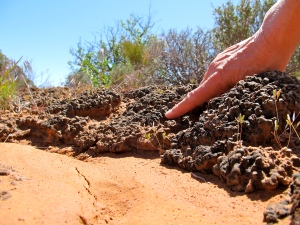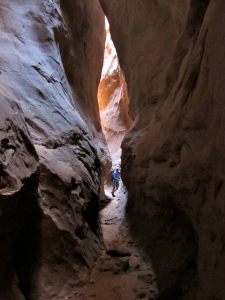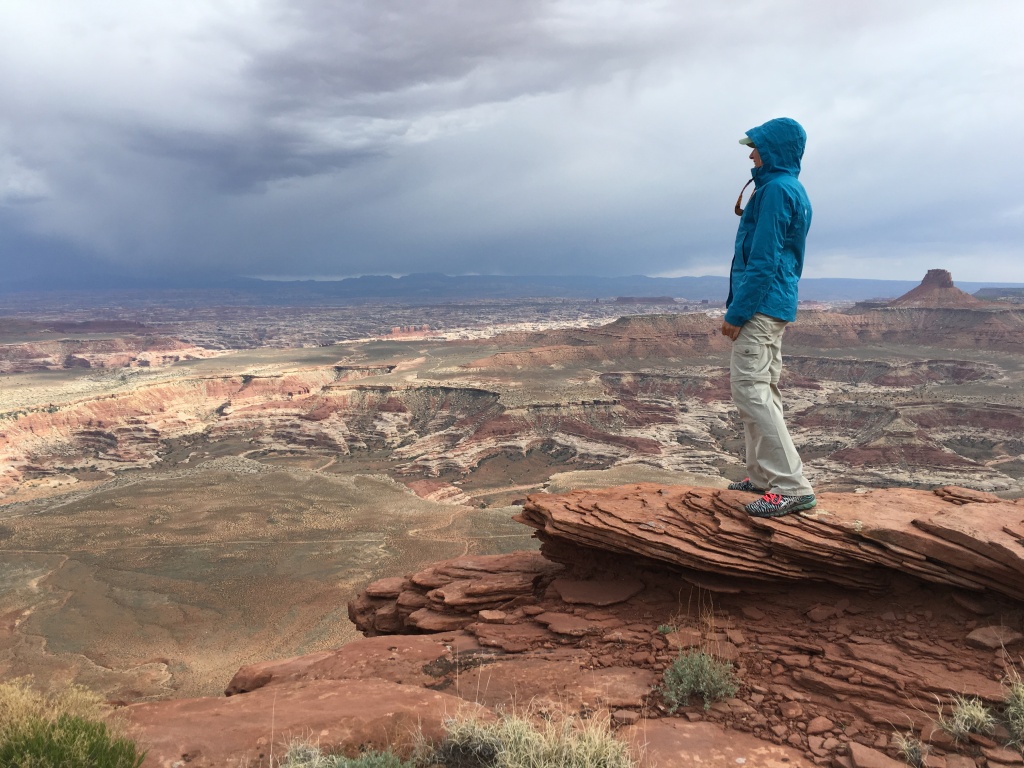MUST. GET. INTO. WILDERNESS.
Come along with me for a recent 24-hour period, and see how I “do” a day off of work… and, as always, click on any photo to enlarge it.
=============
Having found our BLM camp spot on the canyon rim away from it all, Chris builds a fire to chase away the evening chill. In spite of the calendar page saying May, evening temps often dip into the 40s or 30s here in the high desert. Our humble spaghetti supper warms us, and we forgive a mouse intruder who runs across the stove seeking leftovers.

At precisely the time indicated by NOAA, the Full Flower Moon rises just south of the snow-capped La Sal Mountains. I wordlessly press my hand into Chris’s as I am again overcome by a sense of my own smallness in this crushingly beautiful universe.

We roll out our sleeping bags on the sandstone and burrow deeply into them; the Flower Moon will shine on us all night long as it arcs from east to west. A single cricket is the only sound in all the bright darkness.
Pre-dawn brings first birdsong, and we settle for oatmeal with cranberries and walnuts since I forgot the tea and coffee. Shafer Canyon glows with low-angle spears of light; White-throated Swifts take to the skies. A beautiful spring day is in store.

We follow directions in an 18-year-old guidebook to a remote location north of Arches NP and bushwhack into a deep wash, finally dropping into a narrow canyon where we’re mesmerized by the abundant wildflowers — Silvery Lupine, Indian Paintbrush, Penstemmon, Pale Evening Primrose.


Biological Soil Crust (aka “Cryptobiotic Soil”), its top 3 mm filled with living organisms, has stabilized and nourished this area for centuries. (Please do not walk on it. Ever.)

Further upcanyon, big rains five days earlier have created the inevitable patch of jiggly quicksand. My guy’s foot is swallowed up to his ankle. We make a run for firmer sand, laughing.
As the towering canyon walls close in, allowing just a body’s width to pass through, Chris freezes and motions me to halt. To our left, on a boulder in a side crack, a downy youngster rests in the noon sun. Her ear tufts are a species give-away: Great Horned Owl, probably around eight weeks old, probably told by her parents to stay put while they nap. She is surprisingly non-plussed by our presence. We shoot pics and sneak away, not wanting to encounter the talons of a watchful adult.

The canyon dead-ends in a dramatic slot.

When we pass Miss Owlet (I surmise female due to her large size) on our return trip, she is napping. The fifteen feet between us seems immaterial; a very wild animal is sharing the same spot as I am, and the moment is powerful.

Extricating ourselves from the wash, we’re led by the map to Boca Arch a few miles away…

…and then on to Caves Spring, where ancestral Puebloans sheltered nine centuries ago.

To close our day in the backcountry, we come upon a century-old miner’s cabin made of railroad ties still standing in the desert.

I LOVE EXPLORING. My heart is utterly joyful when I’m discovering new things, savoring each revelation, as present as I can possibly be, using every sense to learn more about this soul-stretching world in which we live.
Now I want to know: where is an exhilarating place YOU have explored?



























